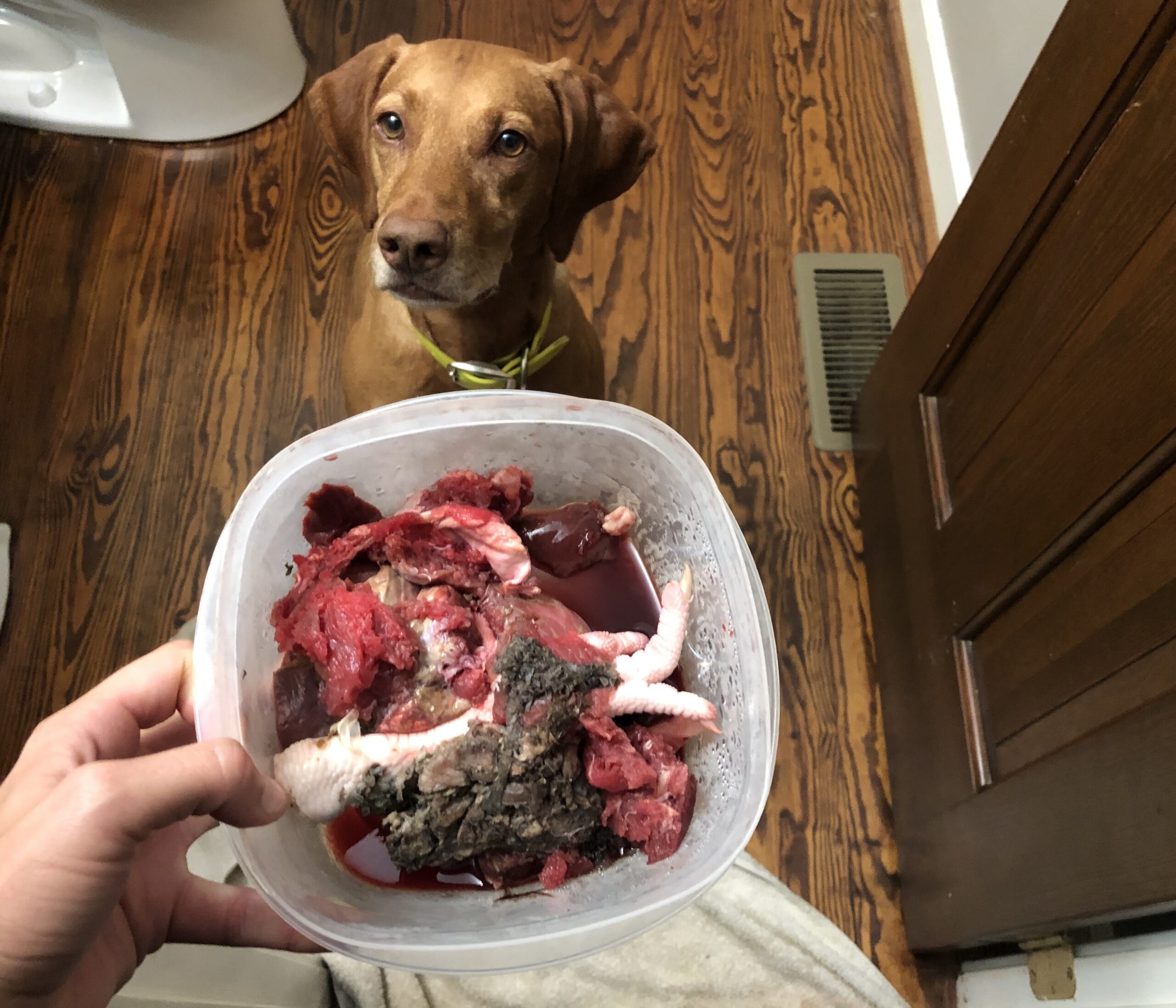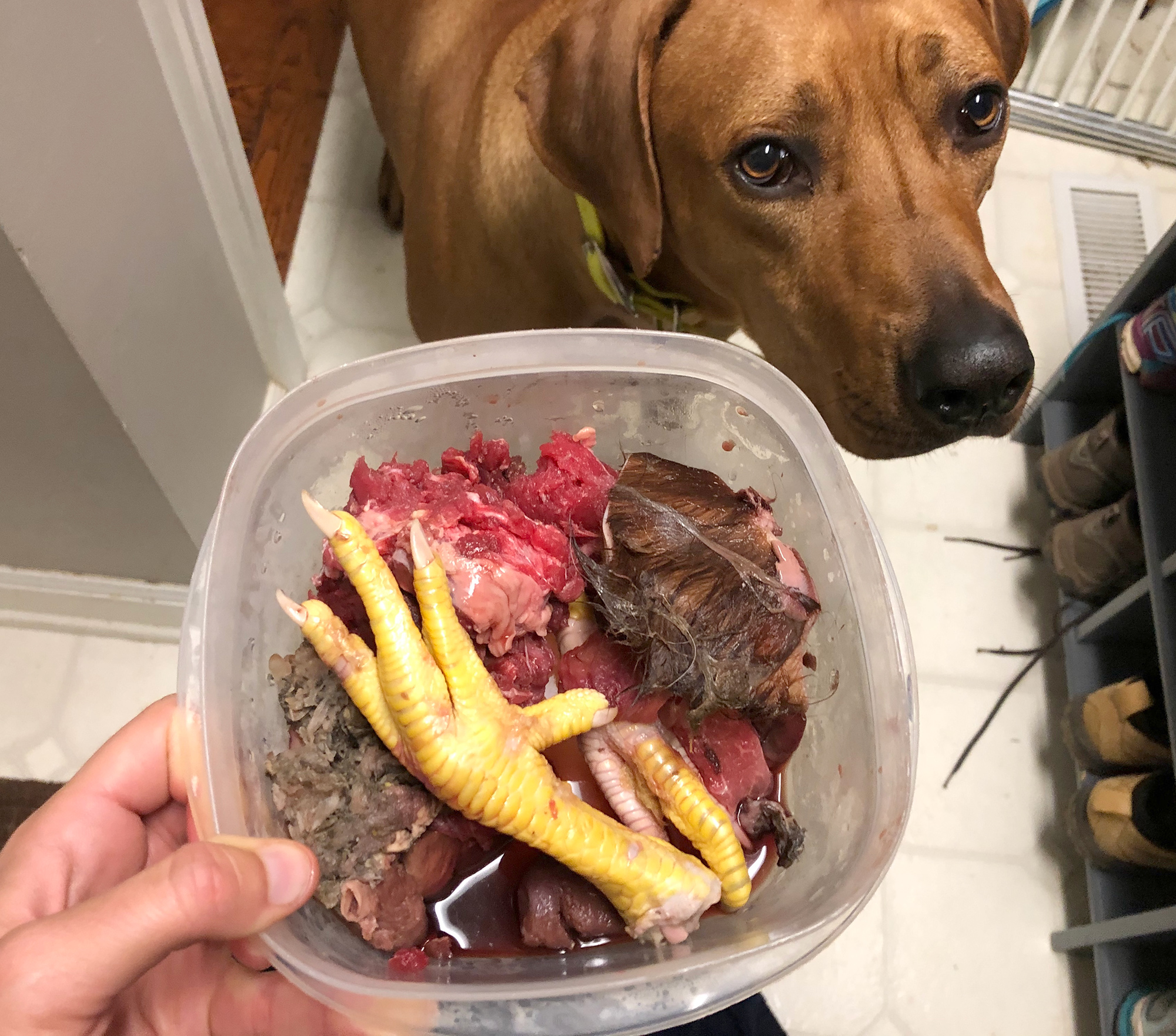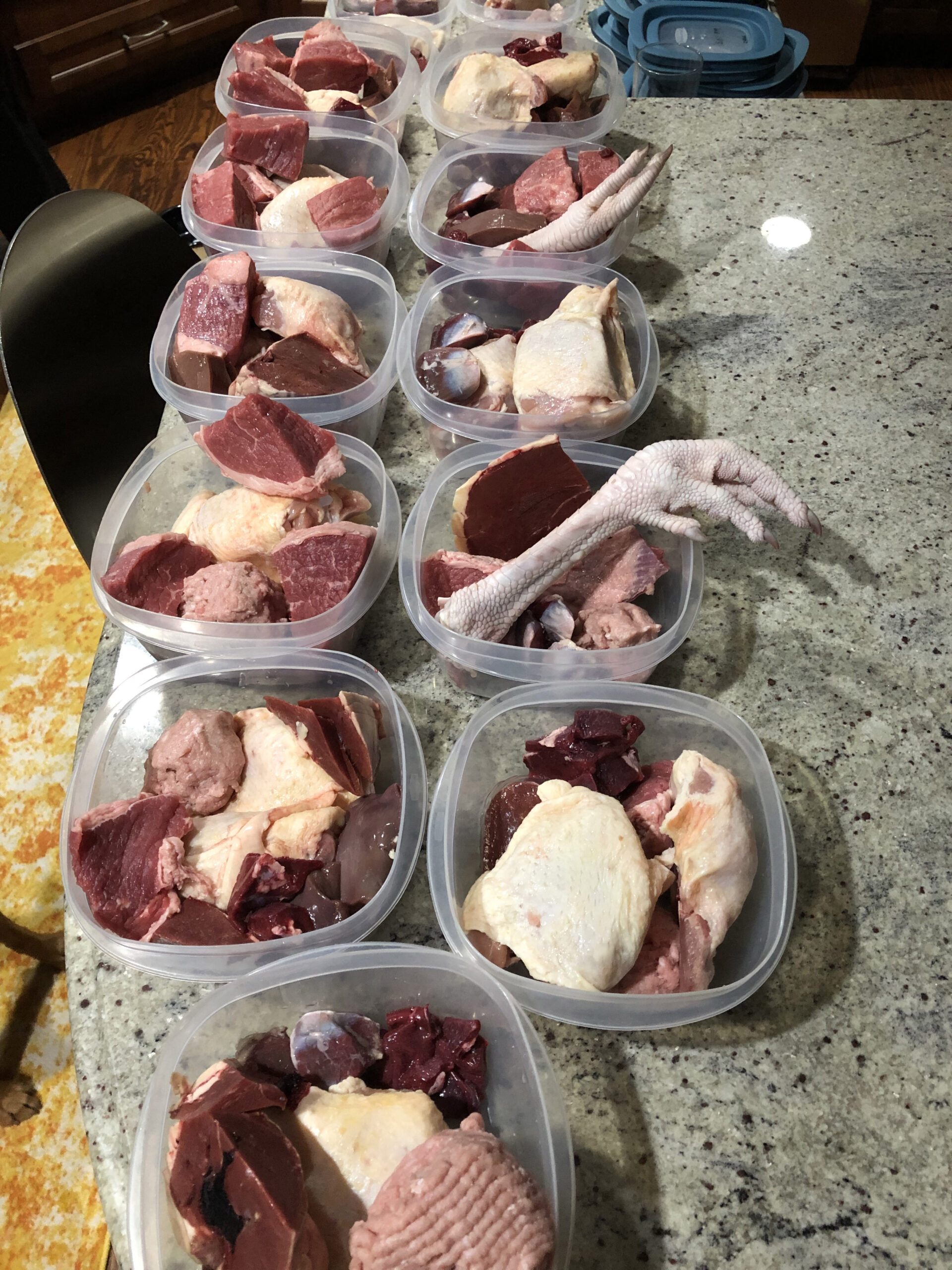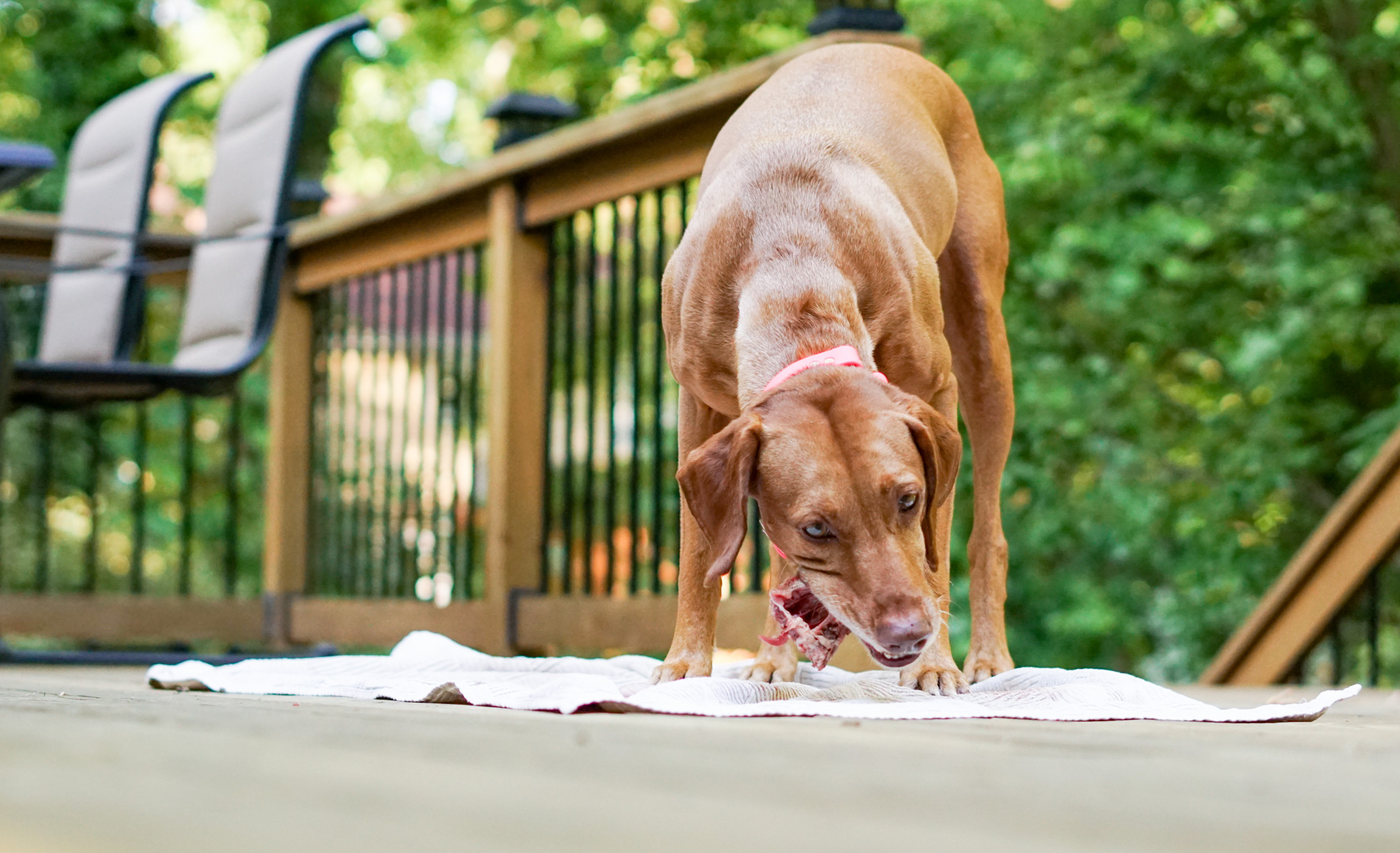As I’ve mentioned before, I’ve been feeding a homemade raw meat diet to my dogs for more than four years now. There are many benefits to feeding raw, and I don’t think I will ever go back to feeding kibble unless there are extenuating circumstances. One of the main things people worry about when feeding raw is the cost. It was definitely something that deterred me when we got Zara as a puppy. So how much does raw feeding cost?
Per Pound Cost is Typically $2 to $3 for Meat
When buying meat for the dogs, I try to stick to cuts that are $2 to $3 per pound. This is generally doable for cuts like chicken legs, chicken breast, pork tenderloin, pork butt, and some of the “off” cuts like liver, feet, gizzards, etc. Ideally, I like to be closer to $2 per pound, but that’s not always possible. Beef is rarely less than $3 a pound. However, I can sometimes find chicken or pork for $1 to $1.50 per pound, so it balances out. I will occasionally spend more to increase the variety in my dogs’ diets.
If you feed a premade raw diet, your cost per pound will be higher. At a minimum, premades are about $4 per pound. They can certainly be more.

My dog’s food bowls rarely look pretty. This meal includes chicken feet, beef tripe, bison liver, bison muscle meat, and beef lung.
Cost Depends on Dog Size and Activity Level
Zara, my seven-year-old vizsla, weighs 47 pounds and eats between 1.25 and 1.75 lbs of meat per day. Typically, adult dogs will eat 2–3% of their body weight per day on a raw diet. For Zara, this should be between .94 lbs and 1.41 lbs per day. You can see that she is sometimes over that. For several years, she ate 2 lbs per day, which is 4.25% of her body weight. She’s a very active dog, so this makes sense. A less active dog will eat less and therefore, the food will cost less. Likewise, a 15 pound dog is going to eat a lot less than an 80 pound dog.
Colombo currently weighs 100 pounds and eats between 1.75 and 2 lbs per day. That is 1.75% to 2% of his body weight. At three and a half, he’s full grown and not super active.

Colombo waits for his dinner of chicken feet, cow ear, beef tripe, bison tripe, and chicken hearts.
Supplements and Other Foods
Although some raw feeders fed a strictly prey model raw style diet without any extras, I don’t. I choose to add in fruits and vegetables along with some other things to increase fiber and make sure they are eating a balanced diet. The biggest cost of these extras for me is canned sardines in water. I add these to make sure the omega-3s are balanced with omega-6s in my dogs’ diets. If you feed primarily commercially-raised meats (instead of pasture-raised), you’ll need to supplement because the amount of omega-3s will be too low. This is easy to do with sardines or other fatty fish.
Sardines cost me $32 a month for both dogs. I also buy greens and berries weekly to add in, which is probably no more than $5 per week. Other extras like eggs, yogurt, and kefir I roll into the human grocery budget, but let’s call that $2 a week.
One additional supplement I give is kelp powder to increase the iodine in their diet. I bought the container I’m using two years ago and it cost $9. I’m only about halfway through it.

These bowls show the “extras” I usually feed: eggs, sardines, pureed pumpkin, raspberries, turmeric paste, and pureed kale. After taking the photo, I mix it all together.

This photo shows two weeks’ worth of prepped meals for Colombo. The containers I use hold about 2.5 lbs of meat max.
Recurrent Costs vs One-Time Costs
When feeding a raw diet, you have recurrent costs (the food your dog is eating each day) and one-time or infrequent costs. Some of the latter are optional, but can really make it your life easier. At a minimum, if you are feeding a homemade raw diet, you’ll need a good knife, a cutting board, a digital kitchen scale, and containers to store prepped meals. A kitchen scale is between $10 and $20. I have a set of plastic Rubbermaid containers to hold Zara and Colombo’s meals. I have 28 containers, so I can use one container per dog per day and I can prep two weeks of meals at one time. The cost of 28 containers was about $125. They’ve held up well for several years and can be cleaned in the dishwasher.
Some people put prepped meals in plastic Ziploc bags, but that’s too much waste for me. I do use gallon-size freezer bags to store extra meat in and I’ve had issues with the bags leaking as I’m thawing them out. That would annoy me to have to deal with on a daily basis.
The other big cost that many raw feeders consider is an extra freezer. For several years, I only had the freezer that is part of my kitchen refridgerator and an extra freezer that’s part of the fridge in our garage. This did not allow me to buy in bulk. When I finally got a small chest freezer, it made my life so much easier. It holds about 100 pounds of meat and I bought it used from a friend for $100. Sites like Facebook Marketplace and Craiglist have similar freezers for $100 to $200. New ones will cost about $200 and up, depending on size. Upright freezers will be a bit more, but organization can be easier with those.
The Total Cost of Raw Feeding
This is for two dogs, eating an average of 105 lbs of meat per month.
Total Cost Per Month
Meat: $275
Sardines: $32
Veggies/Fruits/Seeds: $20
Eggs/yogurt/kefir: $8
Kelp powder (averaged over time), any extras: $5
Total per month: $340
Total per year: $4,080
Total One-Time Costs
Kitchen scale: $20
Chest Freezer: $100
Containers: $130
Total: $250
Raw Costs More Than Kibble
There are plenty of people out there who swear that raw costs them less than kibble. These people probably spend a lot of time watching grocery store sales, stocking up when meats are cheap, and getting free meat by posting Craigslist ads for freezer clean-outs. I think that’s great if you want to spend your time doing that. I do try to buy in bulk during sales whenever I can. But I also have to consider how much gas and time I’d be spending driving around to different places. Right now, I get the majority of my meat from a raw co-op that delivers to Raleigh once a month. It’s so easy to order online and pick it up and then I only have to buy a few things at the grocery store. It’s somewhat more expensive, but the convenience is worth it to me.
Bottom line, I think for most people raw is more expensive than kibble.
Below are some common, higher-end brands of kibble:
- Fromm Adult Gold, 33 lb bag, $52.10
- Purina Pro Plan 30/20 Sport, 37.5 lb bag, $47.98
- Orijen Original, 25 lb bag, $90.99
- Canidae Grain Free Pure, 24 lb bag, $64.99
You can see, on average, you’ll spend between $50 and $90 for a 25-35 lb bag of dry food. When Zara ate kibble, this would last us about a month. Let’s take an average and say it would cost you $65 per month to feed a 50-60 lb dog. That’s $780 per year.
I typically spend about $113 to $170 per month feeding Zara (using the numbers above, I took one-third and one-half). I’d say realistically it’s about $140 per month. That’s $1,680 per year. So I’m spending $75 more per month (or $900 more per year) than if I was feeding kibble. That is not taking into account the one-time costs noted above.
Obviously I think feeding raw is worth it, otherwise I wouldn’t do it.



